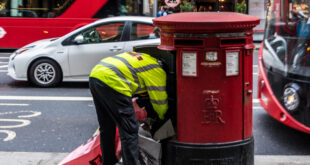London Calling is often seen as being not only The Clash’s finest moment but the watershed moment for the punk movement as a whole. The album is more than just a record to the hundreds of thousands of fans, those supports seeing the project as a life-affirming experience and the record sleeve alone is held with a wealth of significance in so many people’s hearts.
The album cover captures the punk movement in one simple photograph that sees bassist Paul Simonon in a moment of pure rage on stage as he smashes up his bass into the stage of the New York Palladium on September 21, 1979—a visual that epitomises everything great about The Clash’s anti-authoritarian stance.
The person behind the iconic image was British photographer Pennie Smith, an artist who accompanied The Clash on their US tour. Remarkably, Smith initially disliked the photo and tried her hardest to stop it from being made the album cover as it was slightly out of focus due to her attempts to avoid being hit by Simonon. Despite her lack of love for the photo, it has ended up becoming hew most well-known piece of work.
Simonon explained in a 2011 interview with Fender that he smashed the bass out of frustration when he learned that the bouncers at the concert would not allow the audience members to stand up out of their seats; “I wasn’t taking it out on the bass guitar, cos there ain’t anything wrong with it,” the bassist said.
“It’s very pleasant to be praised, but I can’t see that picture now,” Smith said in 2003. “It’s been used in various forms so many times that it’s a bit like wallpaper. Of all the Clash photos I took, there are others that perhaps I prefer, for all sorts of reasons. Yes, I like that picture, but it’s so long ago now. I’ve seen it too many times to get the gut reaction I had at the time.”
“Clash-wise, there are other, more snapshot-type things that still take me back to that gut feeling I had then; perhaps an odd backstage one, maybe one that’s never been seen before,” she added.
The cover artwork itself was designed by graphic designer Rob Lowry who paid homage to the design of Elvis Presley’s self-titled debut album, adding pink letters down the left side and green text across the bottom.
Bizarrely, the legendary cover would later be immortalised in the form of a Royal Mail postage stamp in place of the Queen’s head in 2010—a message which was not what the band would have ever foreseen upon its release but confirms how engrained the cover is in British culture.
A truly iconic cover.



